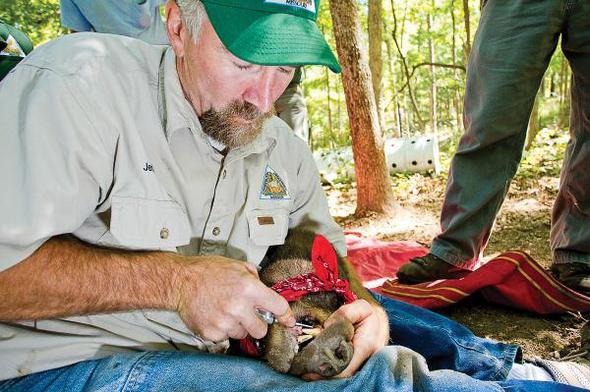
Xplor reconnects kids to nature and helps them find adventure in their own backyard. Free to residents of Missouri.


































Stay in Touch with MDC news, newsletters, events, and manage your subscription

Xplor reconnects kids to nature and helps them find adventure in their own backyard. Free to residents of Missouri.

A monthly publication about conservation in Missouri. Started in 1938, the printed magazine is free to residents of Missouri.


Normal 0 false false false EN-US X-NONE X-NONE /* Style Definitions */ table.MsoNormalTable {mso-style-name:"Table Normal"; mso-tstyle-rowband-size:0; mso-tstyle-colband-size:0; mso-style-noshow:yes; mso-style-priority:99; mso-style-parent:""; mso-padding-alt:0in 5.4pt 0in 5.4pt; mso-para-margin:0in; mso-para-margin-bottom:.0001pt; mso-pagination:widow-orphan; font-size:10.0pt; font-family:"Times New Roman","serif";}
CAPE GIRARDEAU, Mo. – The Missouri Black Bear Project is in its fourth year as conservation officials continue to trap, collar and track black bears in the southern most portion of the state. According to Resource Scientist, Jeff Beringer, with the Missouri Department of Conservation (MDC), his team estimates Missouri’s bear population at 300 animals. This means the project is entering a second phase, where the team will measure reproduction and survival rates to help forecast growth of Missouri’s bear population.
Though black bears were found across Missouri when the first settlers arrived, unregulated hunting and habitat destruction drastically decreased their numbers. By the 1950s, black bears were considered to be extirpated from Missouri.
MDC embarked on the cooperative black-bear research effort with the University of Missouri-Columbia and Mississippi State University in 2010. The study, funded through the U.S. Fish & Wildlife Service with help from Safari Club International, has brought attention to the state’s growing bear population and has shed some light on how the bears behave in the wild.
“We’ve found that black bears in Missouri have very large home ranges at very low densities,” Beringer said, meaning that a low number of bears routinely travel long distances.
For example, a young adult bear traveled nearly 500 miles during the bear project. To keep track of these long-distance bears, Beringer and his team must keep flexible schedules and be highly mobile.
“Because of the mobility needed to keep up with the bears as they cross dense wild areas, this project has been a department wide effort, simply due to the logistics of working across 26 counties,” Beringer said.
The team has located four separate populations of bears across the state. Beringer explained that the presence of female bears determines if a population exists, or if the bears in an area are transient. Those four populations are the focus of the second phase of the Missouri Black Bear Project, which is estimated to take about seven years to complete. It will take that long to find and track a large enough number of female bears in order to adequately estimate their survival and recruitment.
“We want a sample of animals that are statistically meaningful, so seven years with 25 animals observed per year will give us a sample of 175 bear-years,” Beringer said.
With that sample size, the biologists are confident that the reproduction and survival rates they observe and report in the study will be reliable.
“By taking the sample over a significant amount of time, we will have a good idea of what is real,” he said.
The time Beringer has spent on the Missouri Black Bear Project contributes to his desire to help ensure the ultimate health and success of the bears. By sharing the findings of the project, he shares the bears’ comeback story with a large audience. Although it’s a good story to tell, Beringer said the most important thing he wants Missourians to remember about bears is that they should remain wild.
“Bears are wild animals,” he cautioned. “People should never feed bears and we should ensure trash and other items are secured where bears can’t get to it. This rule keeps both people and bears safe.”
Beringer said bears commonly remember an easy meal and will return to sources of food.
“One feeding event can turn a bear into a panhandler and will cause its eventual death,” he said.
The MDC works with private landowners to avoid trapping on public land, which eliminates conflicts with public land use during the bear trapping process. To report a bear sighting, or for more information about the Missouri Black Bear Project, go online to mdc.mo.gov.